Three species of hummingbirds reside in northern California year-round. Though they may migrate to different areas for breeding, they make their home in California. Seven other hummingbirds are spotted infrequently or occasionally, with several others rarely recorded.
Adult males hummingbirds are brightly colored, with vibrant blues, greens, or reds on their bodies and throats. Female and juvenile hummingbirds are generally duller in color and lack the bright-colored throats of the males.
Hummingbirds are the smallest avian breed in North America, with the fastest heart rate of all birds. Read on to find out which species reside in California, along with the species that visit seasonally.
Table of Contents
What Kind Of Hummingbirds Live In Northern California?
Northern California is home to approximately eight species of hummingbirds. Out of the seven species, three are mostly found year-round. All but one are migratory birds, meaning they travel south during the winter season.
| Hummingbird Species | Status | Breeding Grounds (Summer) | Migration Location (Winter) |
| Anna’s Hummingbird | Resident (Non-Migratory) | Pacific Coast of California | Same |
| Allen’s Hummingbird | Seasonal Resident, Migratory | California (Summer) | Mexico |
| Black-chinned Hummingbird | Seasonal Resident, Migratory | California (Summer) | Western Mexico, Gulf Coast |
| Broad-billed Hummingbird | Seasonal Resident, Rare | Mexico, Pacific Coast of Mexico | Arizona, New Mexico |
| Broad-tailed Hummingbird | Mountainous West Mexico | California, border of Nevada | Mexico |
| Calliope Hummingbird | Seasonal Resident, Migratory | Northern California, Nevada, San Francisco | Rocky Mountains |
| Costa’s Hummingbird | Seasonal Resident, Migratory | Baja & Southern California, Arizona | Mexico, Arizona, Nevada, Utah |
| Rufous Hummingbird | Seasonal Resident, Passing, Rare | NW Alaska | Mexico, Gulf Coast |
Anna’s hummingbird is the only non-migratory hummingbird of all the species, residing in California along the pacific coast. Because these hummingbirds don’t migrate, Anna’s Hummingbirds are the most common hummingbird found in California. Though they may move to different elevations after breeding season, these birds stay in California year round!
Hummingbirds in Northern California

Anna’s Hummingbird (Calypte anna)
Quick Facts
- Anna’s are the only hummingbird that doesn’t migrate
- Their ranges are expanding, likely in response to backyard feeders and the availability of plants
- they used to be only in Baja California and western California but are now found widely in California
- Some have also traveled to British Columbia, Canada
Characteristics
- Both females and males are green and gray
- Male Anna’s have a red-pink head and throat (gorget)
- They frequent backyards, scrubs, and parks with tubular flowers
- Females build nests in high trees
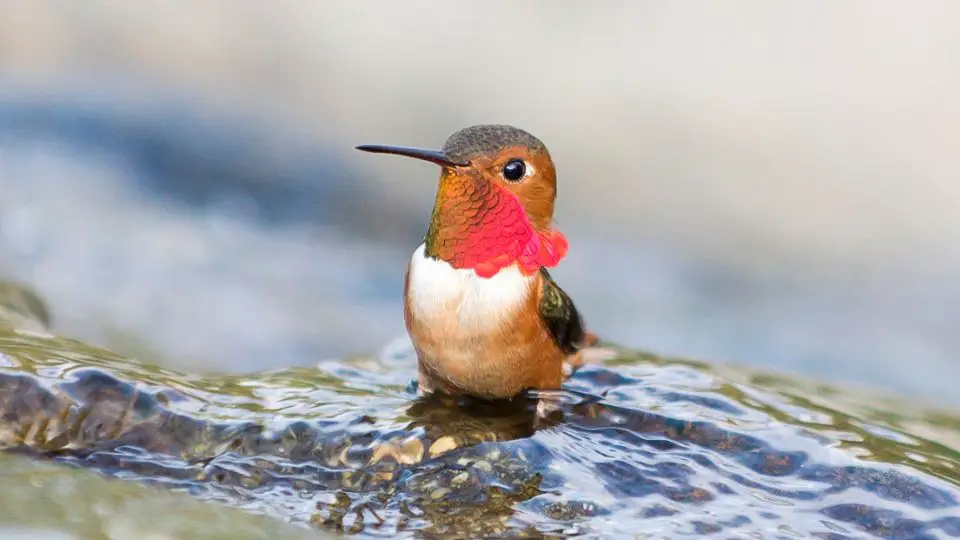
Allen’s Hummingbird (Selasphorus sasin)
Quick Facts
- Found most commonly in the summer months
- Typically stay in southern California during the winter
- Will return to the San Francisco area as early as January
- Found almost exclusively in California and Oregon, with one of the smallest ranges of all North American hummingbirds
- Prefers living in the forests and scrubs of the coast
Characteristics
- Males have orange bellies, eye patches, and red-brown tail feathers
- Males have an iridescent orange-red throat
- Females look similar but don’t have the orange throat
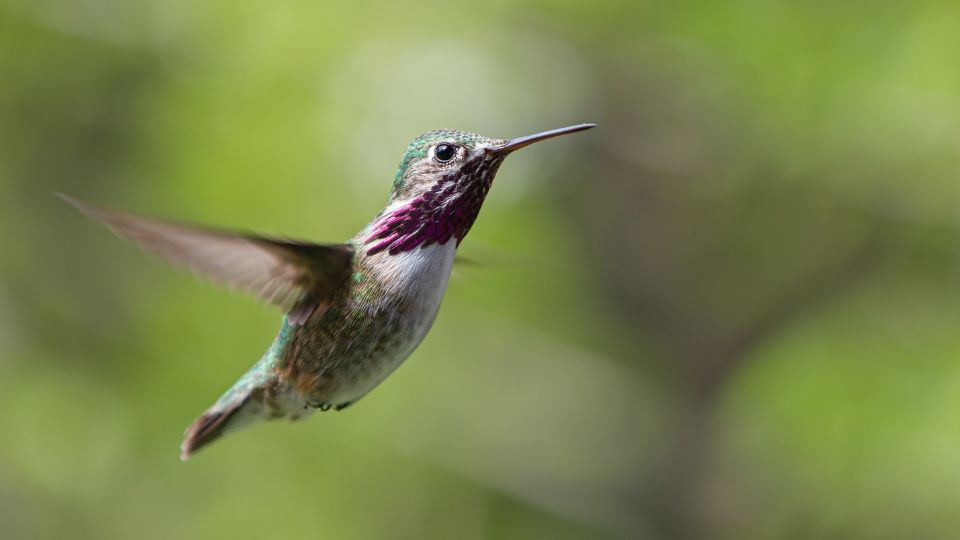
Calliope Hummingbird (Selasphorus calliope)
Quick Facts
- The smallest bird in the US—about the size of a ping pong ball
- Flies up to 5,000 miles each year between Mexico and Canada
- Migrates to the Rocky Mountains and up the Pacific Northwest for breeding in the spring
- Also, breed in the San Francisco Bay area
- Build their nests on top of pine cones and will steal nesting material from other hummingbird nests
Characteristics
- Males have bright magenta throats (gorget), and a green body with a dark tail
- Females have pink spots underneath and lack the bright gorget
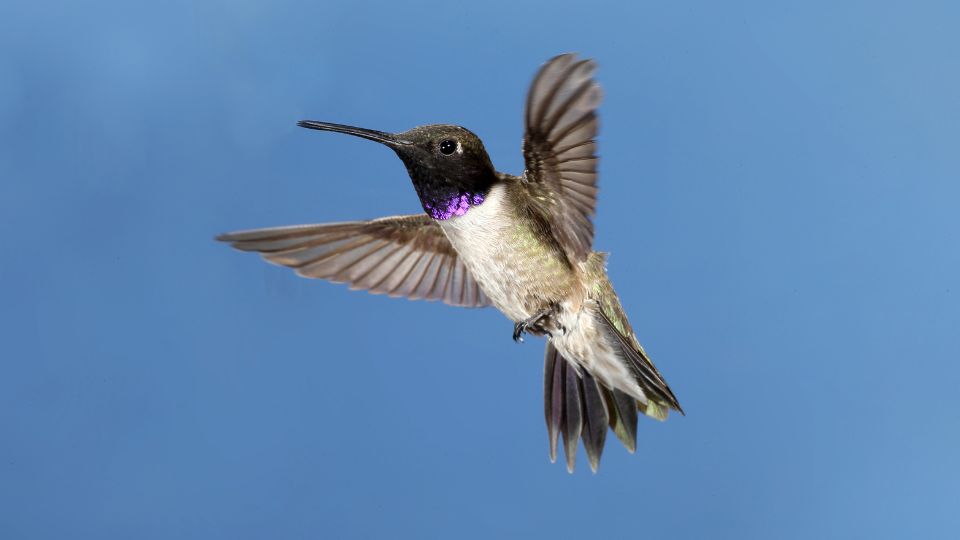
Black-chinned Hummingbird, Archilochus alexandri
Quick Facts
- Spotted mainly between March and October
- Breed in the western united states and migrate to Mexico or the Gulf Coast for the winter
- Use spider webs to finish binding their nests together
Characteristics
- Males have a black throat with a bright purple patch underneath
- Females have a pale gorget and white tips on their tails
- Both females and males have a dull green body
- They prefer to live in canyons or beside rivers
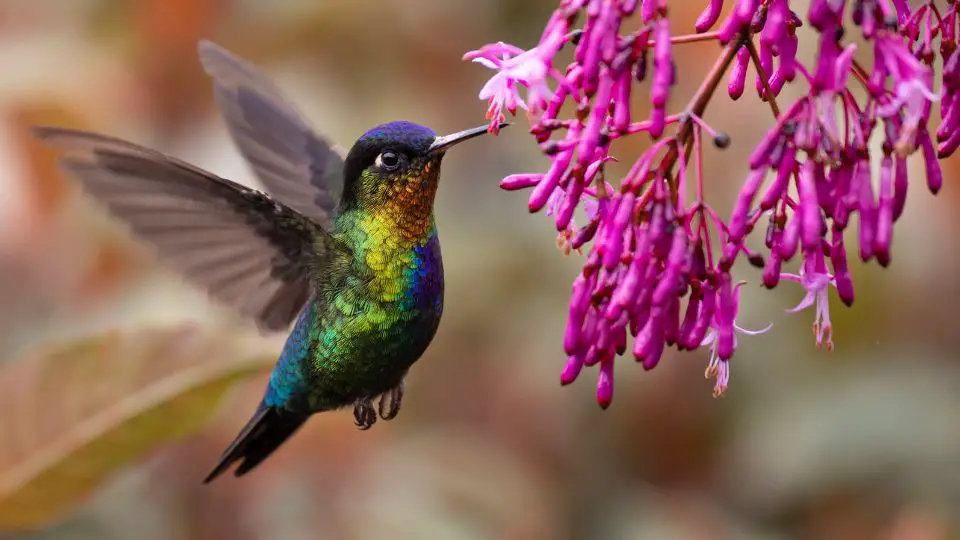
Costa’s Hummingbird, Calypte costae
Quick Facts
- Live in Baja California, southern California, and southwestern Arizona
- Will travel to Utah and Nevada to breed
- Prefer desert habitats, including scrubs and chaparral
- Build low nests—between three and seven feet off the ground
Characteristics
- Males have a purple crown and an iridescent purple gorget
- Males have a green back and sides, with white underneath
- Females are whiter and lack the bright throat and crown colors
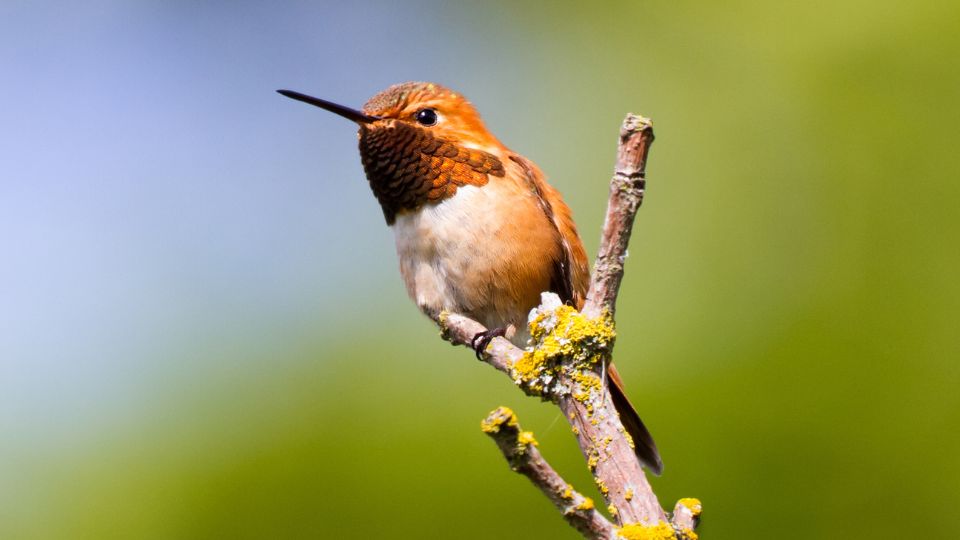
Rufous Hummingbird, Selasphorus Rufus
Quick Facts
- Migrate through California between February and May, and again mid-June through October
- Extremely aggressive and will chase larger birds away from nests or food sources
- Rufous refers not only to this species of hummingbird but to a rusty orange color in general
Characteristics
- Males have a bright orange back and underbelly
- Males have an iridescent red throat with a white patch underneath
- Females are green or brown, with rufous patches along their sides

Broad-billed Hummingbird, Cynanthus latirostris
Quick Facts
- Rare vagrant, sightings mainly in the fall
- Live mainly in Mexico, traveling to Arizona and New Mexico
- Build their nests near streams in the southwest and quite low to the ground
Characteristics
- Males are metallic green all over, including their tails and wings
- Both males and females have red bills
- Visit backyard feeders
- Live near sea-level streams and meadows
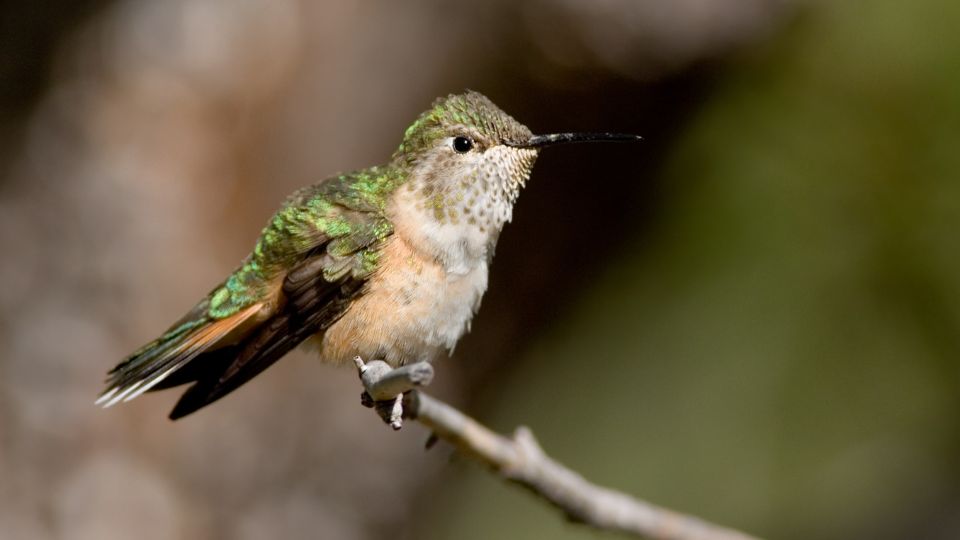
Broad-tailed Hummingbird, Cynanthus latirostris
Quick Facts
- Rare vagrant
- Lives in one of the highest elevations of the southwest
- Prefer breeding in the high mountains of northern California
- Named because of their rounded tail that extends beyond their wingspan
- A larger hummingbird in California—over 4 inches in length
Characteristics
- Males have a bright red throat
- Both sexes have a white ring around the eye and iridescent green back
Ruby-throated Hummingbird, Archilochus colubris
Quick Facts
- Rare vagrant
- Most common hummingbird in the eastern 2/3 of the US
- Flies 500 miles non-stop over the Gulf of Mexico for both spring and fall migration
Characteristics
- Males are known for their ruby-red throat and metallic green body
- Females are duller green, with a soft white underbelly
- Frequent visitors to backyard feeders
Do Hummingbirds Migrate In Northern California?
Yes. Like most species of hummingbirds, the hummingbirds in Northern California migrate in the fall towards warmer climate when the weather starts to cool down. These hummingbirds use the Pacific Flyway, moving up and down the Pacific Coast in search of breeding and wintering grounds.
What Is The Pacific Flyway?
The Pacific Flyway is one of four migratory flyways that migrating birds travel twice a year. The Pacific Flyway extends from Alaska down through western Canada, California, and into west Mexico. The Central Valley, including the Sacramento Valley and the San Joaquin Valley, supports migratory songbirds and hummingbirds on their migration journeys.
What Do Hummingbirds Eat In California?
Hummingbirds eat small insects, including gnats and beetles. They drink nectar from tubular flowers and are drawn to red, pink, and purple flowers. Hummingbirds also enjoy eating sugar water from backyard feeders that are provided by birders. It’s recommended that people who live in California put out nectar feeding stations to supplement the hummingbirds food supply, as many are migrants passing a long way to get to Mexico.
The rufous hummingbird migrates down to Mexico in the winter, and they come down from as far up as Alaska. They don’t typically settle in California, thus making the longest migrations of most hummingbirds. The range from Alaska to Mexico is approximately 3,900 miles. Rufous Hummingbirds actually make a clockwise migration, going south over the Rocky mountains, back north across the Pacific flyway.
How To Attract Hummingbirds To Your Northern California Space
Because hummingbirds have such a high heart rate, they must constantly feed to maintain their metabolism. These birds need to eat up at least three times their weight each day, replenishing their energy by feeding every 15 minutes or so. At night, they enter torpor to slow their body function so they can survive overnight without feeding.
To Attract Hummingbirds:
- Hang feeders in your backyard. Keep hummingbird feeders away from other bird feeders, making a space just for hummingbirds.
- Plant native plants, including
- Salvia
- Fuchsia
- Zinnias
- Trumpet Vine
- Phlox
Set up an area to attract hummingbirds and other pollinators near your feeders and wait. The hummingbirds will find you!

